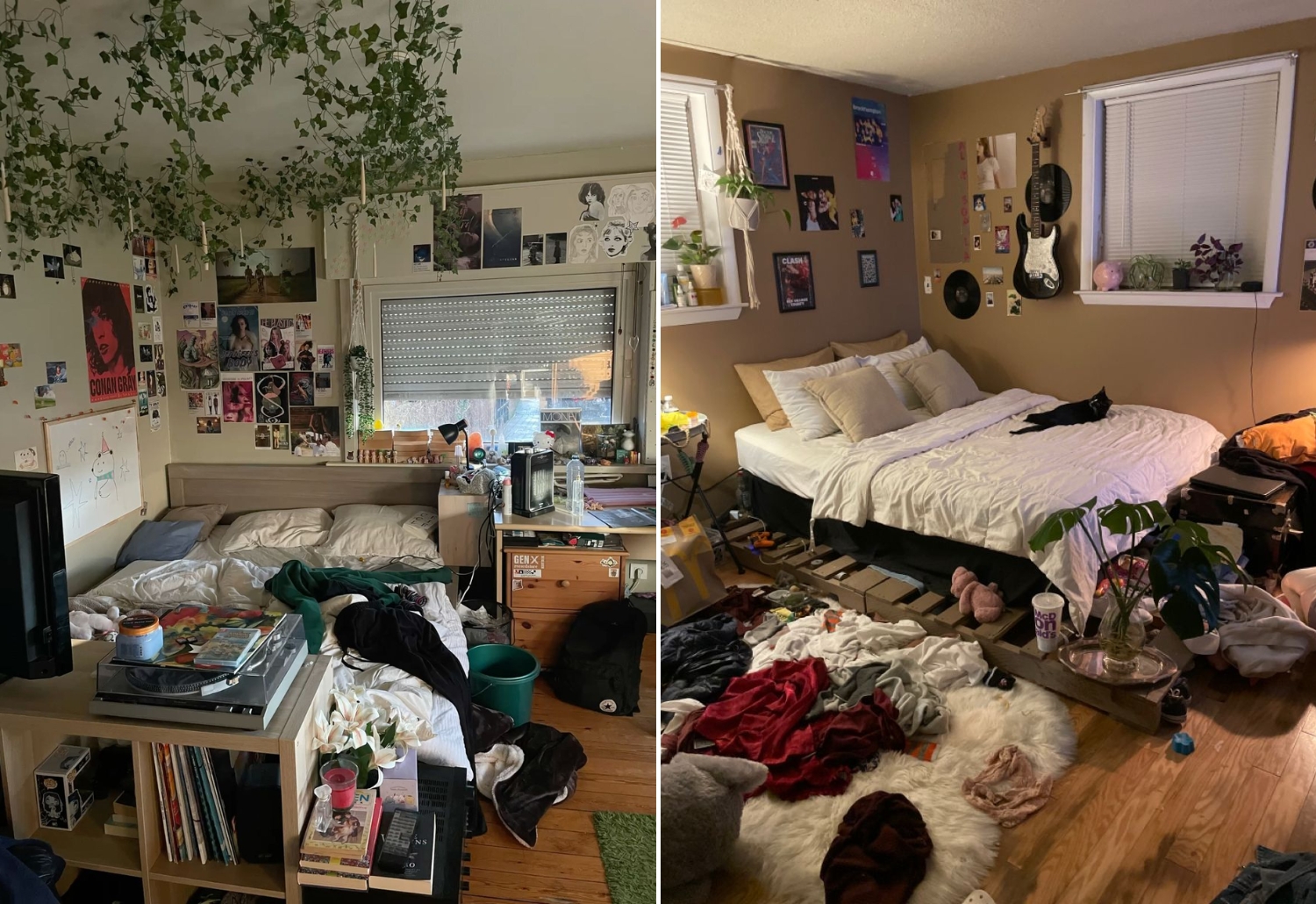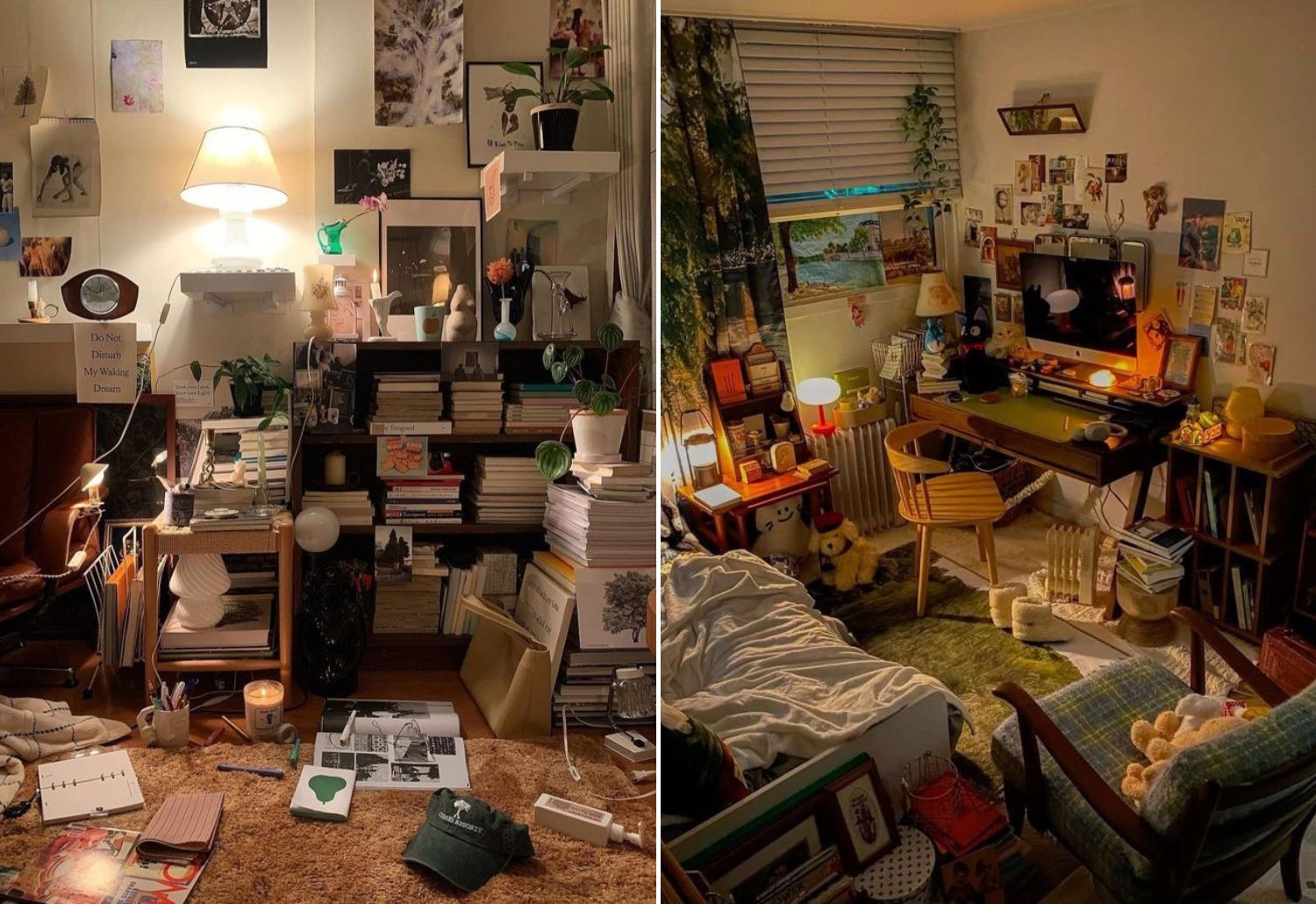The Messy Girl Aesthetics
If you’ve been scrolling through home decor trends recently, you’ve probably come across the so-called “Messy Girl Aesthetic.” On the surface, it appears to be about carefree, lived-in spaces—rooms that reflect a busy lifestyle rather than a meticulously staged home. But if you look closer, you’ll see this trend is far from the authentic spontaneity it claims to represent. Instead of embracing genuine imperfection, it’s often a curated form of chaos designed for social media, not for real living.
The Illusion of Effortless Living
The premise sounds appealing—after all, a perfectly styled home can sometimes feel unattainable. But the “Messy Girl Aesthetic” doesn’t actually mean embracing your natural day-to-day clutter. It’s a deliberately arranged scene: mismatched mugs positioned just right, books open at aesthetically pleasing angles, and blankets “tossed” in ways that are anything but random. What you end up with is a controlled mess, one that takes time, money, and effort to stage—ironically defeating the idea of carefree comfort.
A Disconnect from True Comfort
This style appeals to those who want to break décor standards; however, the execution is flawed. Whether you need a small space solution in a city apartment or a living room that serves as a hub for business, entertainment, and leisure, home decor should fit your lifestyle. The “Messy Girl Aesthetic” risks turning comfort into a performance for an audience.
Minimalism and Function Matter
A well-used home can still function. Minimalist and sustainable design emphasize function over form. Creating places that merge visual warmth with function—think eco-friendly home materials, energy-saving appliances, or AI-powered home automation that reacts to your needs—may be more durable than pursuing this trend’s managed chaos. These features provide long-term comfort, not just aesthetics.
The Social Media Impact
The “Messy Girl Aesthetic” thrives on TikTok and Instagram, where visual storytelling is key, like many home decor fads. However, these platforms impose unrealistic requirements. The dirty coffee table online is set under excellent lighting to look effortlessly stylish. Real clutter—unpaid bills, tangled charging connections, last night’s dinner plates—isn’t as charming.

Minimalism and Function Matter
Style overshadows sustainability
These trends are also problematic because the goods used to create the “look” are disposable. Mismatched pottery, thrifted furniture, and old fabrics may look sustainable, but they’re often acquired for content then replaced. In contrast, sustainable home design involves buying durable items, choosing wisely, and reducing waste.
Balancing Lived-In and Intentional
You don’t have to choose between a clean, magazine-ready house and a cozy one. The key is to focus on intentional design choices that work for your lifestyle. That might mean:
- Prioritizing small space solutions for better organization.
- Incorporating energy-efficient home features for comfort and savings.
- Mixing personal, sentimental pieces with timeless staples.
- Using decluttering techniques to keep your space manageable without stripping it of personality.
- These approaches create a home that feels personal and functional—without staging it for a camera lens.
Why Purpose Should Lead Design
Every decor choice you make should start with purpose. Is that extra throw pillow adding comfort, or is it just part of an aesthetic you’ve been told is desirable? Is the art on your walls meaningful, or is it just filling space? Trends like the “Messy Girl Aesthetic” can be fun for inspiration, but they should never override the real goal of a home: to support your lifestyle and reflect your personality.
A Space That Works for You
If you love the casual feel of a less structured home, there’s nothing wrong with embracing it—but let it be authentic. There will always be a mix of order and chaos in a real home, with times of perfect organization and signs of everyday life. Instead of trying to copy a stylized version of “mess,” make a place that is comfortable for you, works with your daily habits, and changes as you do.
In conclusion
The “Messy Girl Aesthetic” may market itself as a celebration of flaws, but in real life, it often fails to meet the main goal of home design, which is to make a place that works for you. You can make your home warm, real, and timeless without trying to create a perfect chaos by focusing on useful comfort, eco-friendly choices, and design choices that fit your lifestyle.

